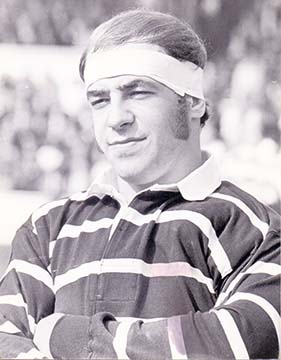 John ‘Keith’ Bridges followed in his father’s footsteps in becoming one of the game’s best hookers.
Christened John, but nicknamed Keith after his dad, Bridges was part of the great Featherstone Rovers team of the 1970s before successful stints at Bradford Northern and Hull FC. He toured with the 1974 Lions and played for England in the
John ‘Keith’ Bridges followed in his father’s footsteps in becoming one of the game’s best hookers.
Christened John, but nicknamed Keith after his dad, Bridges was part of the great Featherstone Rovers team of the 1970s before successful stints at Bradford Northern and Hull FC. He toured with the 1974 Lions and played for England in the Rugby League Heroes: John ‘Keith’ Bridges
 John ‘Keith’ Bridges followed in his father’s footsteps in becoming one of the game’s best hookers.
Christened John, but nicknamed Keith after his dad, Bridges was part of the great Featherstone Rovers team of the 1970s before successful stints at Bradford Northern and Hull FC. He toured with the 1974 Lions and played for England in the
John ‘Keith’ Bridges followed in his father’s footsteps in becoming one of the game’s best hookers.
Christened John, but nicknamed Keith after his dad, Bridges was part of the great Featherstone Rovers team of the 1970s before successful stints at Bradford Northern and Hull FC. He toured with the 1974 Lions and played for England in the 